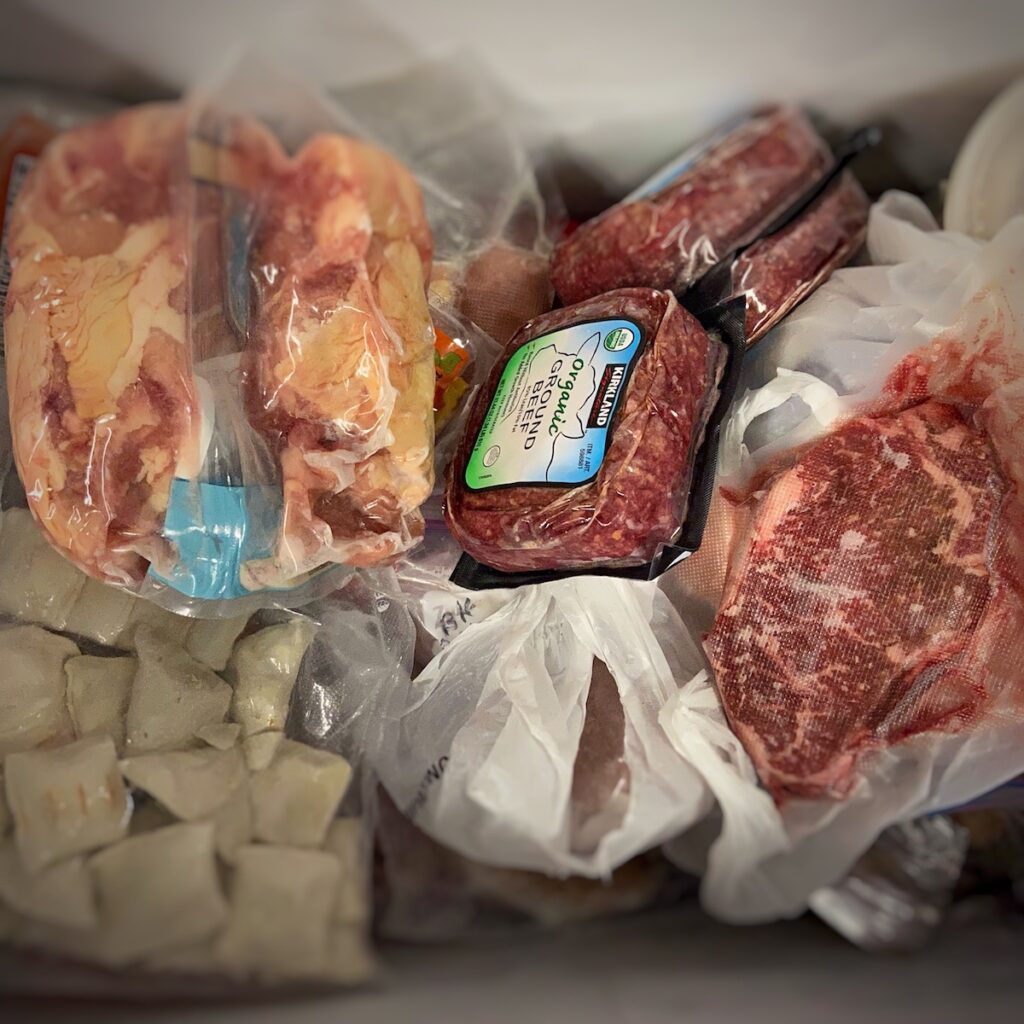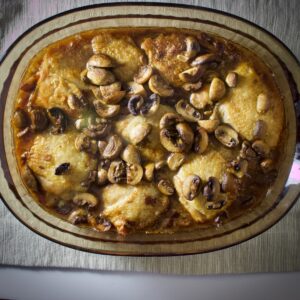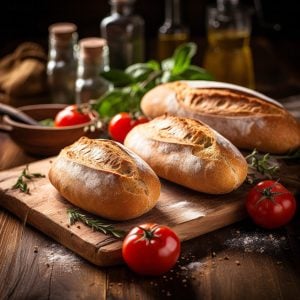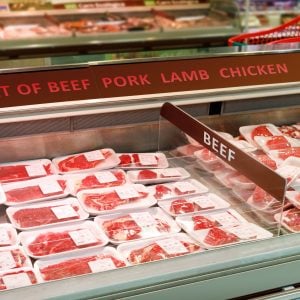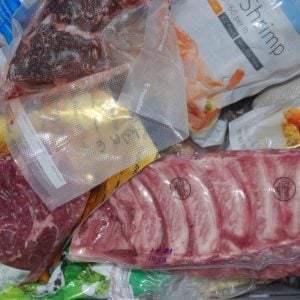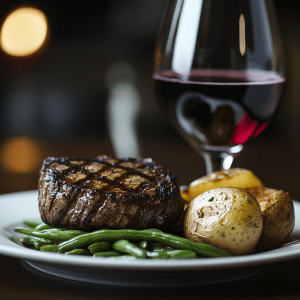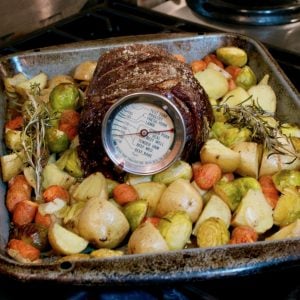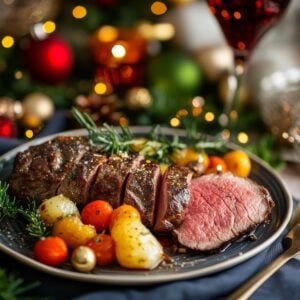What Is the Best Way to Freeze Foods?
Whether you’re freezing foods in your kitchen refrigerator or in a stand alone freezer in the basement or garage, how you prepare and actually freeze foods can make a huge difference. Nothing worse than storing some expensive Filet Mignon, only to find out after a few months you have freezer burn because you didn’t freeze it properly.
Years ago, when I purchased some steaks or a leg of lamb for future cooking, I might have just placed the food in the freezer in the packaging it came in. I’ve learned since, there are much better ways to freeze foods and I’m going to share these tips with you.
Why Freeze Food
We freeze food to preserve it for recommended periods of time. Here are some reasons I freeze food:
- I love buying in bulk at box stores like Costco or Sam’s Club to save money.
- Sometimes I cook too much so freezing is great for saving leftovers.
- Makes foods like tofu better for cooking.
- Great for locking in flavor and nutrients in vegetables.
- I like to save leftover chicken bones and beef bones for making stock.
- Allows me to eat foods out of season.
- Saves me money on food sales.
- I always have foods on hand for a quick meal. Think frozen shrimp or vegetables.
- Preparing meals ahead of time or on weekends so you have a quick meal during the week.
- I can save foods from the refrigerator that look like they are going bad especially fruits and vegetables.
- My wife freezes grapes and eats them as a snack instead of some sugary alternative.
How Long Can You Freeze Food?
For me, sometimes way longer than recommended by most standards. If you go to the U.S. Department of Agriculture’s web site, you’ll see they say, “Because freezing keeps food safe almost indefinitely, recommended storage times are for quality (taste and texture) only.”
“Indefinitely”, I like the sound of that. We just found a leg of lamb in the freezer that’s been in there for many years. We defrosted the lamb and cooked it and it was fine. The small print from the USDA is the food must be stored at a constant zero degrees Fahrenheit to stay safe.
That’s not as easy as it sounds. Below I address some factors making it difficult to achieve a constant zero degrees.
Now, foods frozen for a year or more may be safe but will they taste good. Not according to everything I’ve been reading. The USDA says, “being able to freeze food and being pleased with the quality after defrosting are two different things.”
So the USDA and the FDA offer recommendations for how long to freeze food. This is not based on safety but quality. I have a post called Recommended Freezer Storage Times based on their suggestions.
Why Is Freezing Good for Preserving Foods?
Freezing slows down the movement of the molecules and prevents the growth of microorganisms thus preventing spoilage and/or food-borne illnesses. That doesn’t mean it will kill any bacteria or molds, just make them inactive while they are frozen.
If you freeze food that’s already contaminated, once you thaw it, the harmful bacterial or molds become active again. The only way to make the food safe is cooking it to the recommended temperatures to insure the bacteria is killed.
Freezing also slows down enzyme activity that is responsible for ripening in some foods like fruits and vegetables.
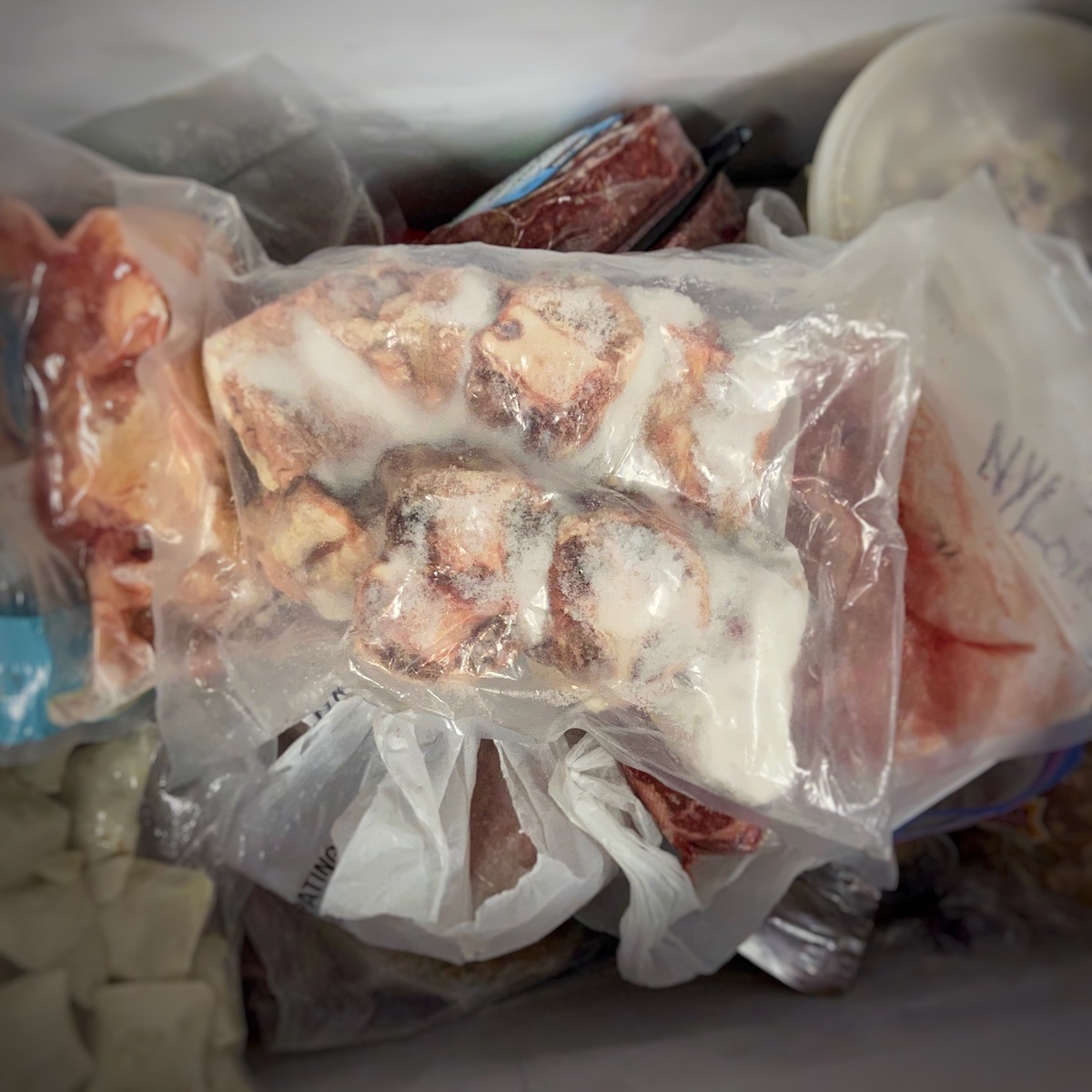
What Is Freezer Burn?
Freezer burn is the enemy of frozen foods. It coats frozen foods, both raw and cooked, with ice crystals and is responsible for loss of moisture in whatever you are freezing. You can expect freezer burn to start showing after three months in a standard home freezer especially if it is not packaged well from the start.
Although there is no way to prevent freezer burn from foods staying in the freezer too long, there are ways to slow it down. Good packaging is one way especially if you use a vacuum sealer to remove as much of the air as possible.
The real culprit causing freezer burn is temperature fluctuation. Doesn’t matter how well you wrap your foods, if your freezer temperature fluctuates above zero degrees Fahrenheit, you’re going to get the dreaded freezer burn.
What happens? When the temperature goes above zero, foods start to lose moisture. When the temperature goes back down to zero, the moisture freezes and forms into ice crystals.
Freezer burn is not going to make your food bad, but it make discolor it and give it unappealing dry spots that can be grayish-brown. No worries, just cut away the freezer burned portion before cooking and you should be OK. If the entire cut of meat or vegetables is brown from freezer burn, it’s time to think about throwing it all away.
How to Prevent Freezer Burn
There are several ways to prevent freezer burn from happening:
- First, use airtight packaging: Proper packaging prevents freezer burn. Use airtight containers or bags specifically designed for freezing, and make sure there is as little air as possible in the packaging.
- Wrap food tightly: Wrap food tightly in plastic wrap or aluminum foil before placing it in an airtight container or bag. This will help prevent air and moisture from contacting the food.
- Label and date: Always label and date the food before freezing so you know how long it has been in the freezer. Try to use the food within the recommended time frame.
- Freeze quickly: Freeze food quickly to prevent large ice crystals from forming. Place food in the coldest part of the freezer and avoid overcrowding the freezer.
- Keep the freezer at the right temperature: Maintain your freezer at a temperature of 0°F or lower. A warmer temperature can cause ice crystals to form more quickly, leading to freezer burn.
- Don’t refreeze thawed food: Once food has been thawed, it should not be refrozen. Refreezing can cause moisture to evaporate, resulting in freezer burn.
- Use a vacuum sealer: A vacuum sealer is a machine that removes air from a plastic bag before sealing it, creating an airtight seal. This can help prevent freezer burn by eliminating air and moisture.
- Use freezer-safe containers: Opt for containers specifically designed for freezer use. Unfortunately, not all containers can withstand the extreme cold of the freezer, and some may crack or break, leading to freezer burn.
- Avoid stacking: Stacking food in the freezer can cause pressure on the food, allowing air to escape and leading to freezer burn. Place food in a single layer to prevent this.
Is Your Freezer Doing Its Job?
What can affect the temperature of your freezer? Lot of things including:
- What temperature you set it at.
- Ambient temperature.
- How old your freezer is and how well it is working.
- How often you open the freezer door.
- How good the seal is around the freezer door.
- Is there a build up of ice in your freezer?
- How tightly is the food packed in your freezer?
- Power outages.
Best Practices For Freezing Foods
Packaging
So besides keeping your freezer in tip-top shape so it maintains its zero degree Fahrenheit status, the next next best way to preserve frozen foods is packaging. The better you package any food for freezing, the less freezer burn you have to deal with and the quality of the food will hold up.
If you are freezing food to eat in the next week or two, a simple wrap may be just fine but if you are planning to freeze those pork tenderloins for an extended period of time, go overboard with the packaging. Double wrap these foods for best results.
If you are not using a vacuum sealer to remove as much air as possible, here are some other products you can use to freeze your foods in:
- plastic or glass containers
- freezer wrap
- Ziploc bags either regular or their freezer bags
- Shrink wrap – polyolefin is the better choice
- Wax coated cardboard, think Chinese food containers
- Aluminum trays for lasagna or manicotti
- freezer bags
Can You Use the Same Packaging the Food Came In?
We buy some meats from Costco like ribs or a whole beef tenderloin that already come in cryovac packaging. These I don’t mind throwing right into the freezer if I’m not using them right away. The cryovac is usually thick and sometimes has been vacuumed.
Other items I prefer to repackage using my vaccum sealer with freezer bags. Now if I purchase a frozen food item at the market, I won’t remove the packaging and repackage. For example we eat a lot of frozen peas in our house and we don’t repackage them but we also go through them rather quickly.
If I buy bulk chicken thighs, I do break them up into smaller packaging to make it easier when I only need two or three chicken thighs for a recipe.
Cool Food Before Freezing
Before freezing food, ensure it is cooled to room temperature or chilled in the refrigerator. Hot or warm food can raise the temperature of your freezer, leading to the growth of bacteria and spoilage of other frozen foods. Cooling the food also helps prevent freezer burn caused by moisture escaping from the food.
Use a Freezer-Safe Container
When freezing food, ensure you use a freezer-safe container. This means a container made for freezing food and can withstand the extreme temperatures of the freezer. Containers not freezer-safe can crack or break, causing freezer burn and ruining the food.
Avoid Overfilling Containers
When freezing food, ensure that the container is not overfilled. Instead, leave enough space for the food to expand as it freezes. Overfilled containers can cause the lid to pop off, leading to freezer burn and spoilage.
Freeze in Small Portions
Freezing food in small portions is a great way to save time and reduce waste. For example, you can freeze individual portions of soup, stews, or casseroles in small freezer bags or containers. This makes it easy to thaw and reheat only what you need instead of thawing and reheating the entire batch.
Freeze Raw and Cooked Foods Separately
Raw and cooked foods should be frozen separately to avoid contamination. Raw meat, poultry, and seafood should be wrapped tightly in plastic wrap or put in a plastic bag before freezing. Cooked foods should be cooled before freezing and stored in an airtight container.
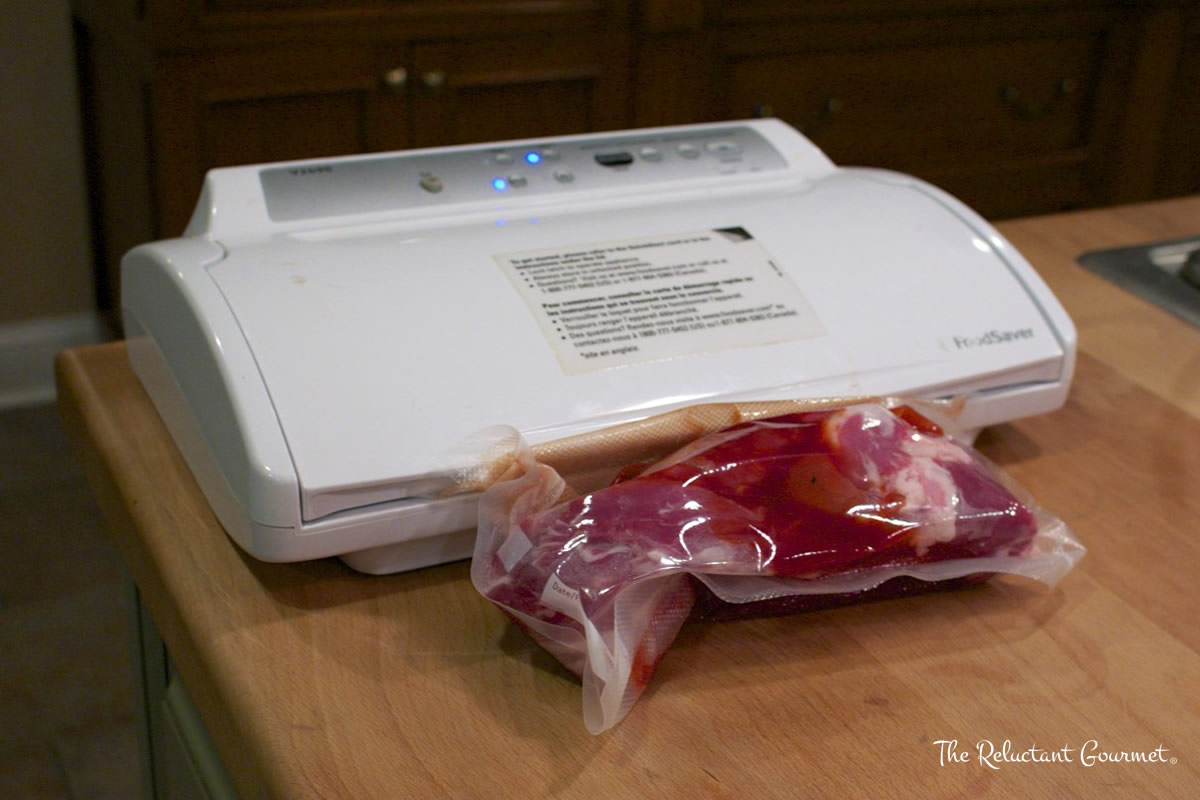
Vacuum Seal If You Can
I highly recommend purchasing a good vacuum sealer not only for freezing foods but storing food items in your refrigerator. I have paid for my sealer several times over by reducing food waste. I can’t tell you how much cheese I threw out before we started vacuum sealing it between uses.
We also vacuum seal leftovers and I like to sous vide chicken and pork and freeze them in the vacuum sealed bags I used for sous vide.
Label Your Packaging
No matter what you use to package your foods to be frozen, be sure to label the package with content and date. This way you know exactly how long something has been sitting in the freezer.
Use a good sharpie pen or something that won’t fade after a month or two. It’s sometimes easier to label the packaging before you put your foods into the package. They may even make special pens for labeling frozen foods but a good marker works just as well.
Freeze Your Food As Rapidly As Possible
You’ll want to freeze food items including leftovers and food just bought at the market as soon as possible. The faster you can freeze the food items, the less chance there is to form ice crystals because their molecules won’t have time to form them.
The problem with slow freezing food is the possibility of ice crystals to form which will damage the food’s cells when defrosting. In meats like beef and chicken, the damaged cells can cause the meat to loose their juiciness.
A good way to prevent slow freezing is to spread food items out in your freezer so they form one layer. Never stack foods you want to freeze quickly because the stacking slows down the process.
You never want to freeze food items that are still hot or warm. Not only will they heat up items around them in the freezer, it will just take longer for them to freeze resulting in those ice crystals you are trying to avoid.
Flash Freezing
So lets say you just picked a bunch of raspberries and you want to freeze them quickly. The best way to do this is by first flash freezing them.
To flash freeze something is to freeze foods at a low temperature with cold circulating air. At home, you can do this by placing those berries onto a baking sheet being sure to give them enough space between them so they don’t freeze together and placing them in to your freezer.
In 15 to 20 minutes, the outer surface should be frozen enough so they won’t stick when stored in a airtight container or freezer bag. This way you can grab a handful for the raspberry smoothie when you need them.
Rotate Your Frozen Foods
We purchase foods all the time at farmer’s markets and bulk stores like Costco all the time. We get home, package them for freezing and toss them into our freezer in the garage.
The problem with this is we may have bought more of those boneless chicken thighs because they were on sale but we already have two more packages of them at the bottom of the freezer. You want to cook and eat those thighs from the bottom of the freezer first and it’s why it is so important to label all packages going into the freezer.
If you take the time to rotate items in your freezer, you’re likely to find duplicates and can move them to the top of the pile. If you don’t, you’re likely to find some chicken thighs one day covered with ice crystals. Still eatable but not as tasty.
Make a List of What’s In Your Freezer
Another way to make sure you are eating last in foods first is by making a list of everything you put into the freezer with a date. This way you not only have an idea of what’s in the freezer but how long it has been in there.
I guarantee if you do a deep dive into your freezer, you will be shocked by what you may find. You’ll be asking yourself, “how long have those raviolis been in there?”
We made a check off list of items we typically store in the freezer with a place for a date next to each item. When we put something in, we just put how many and the date. When we remove food items, we cross of the item we’re using. It’s great for knowing what you need before you go out shopping and have to guess.
Thaw Food Safely
When it comes time to use your frozen food, it is important to thaw it safely. The best way to thaw food is in the refrigerator, where it can thaw slowly and safely. You can also thaw food in the microwave or by placing it in a bowl of cold water. Never thaw food at room temperature.
What About Freezer Bags? Are They Necessary?
I read this great article about freezer bags, specifically Ziploc freezer bags, that suggested you don’t need to spend the money of Ziploc’s freezer bags when their regular storage bags work just as well. You can read the entire article here, but here is the article’s gist.
Ziploc bags, not freezer bags, “adhere to the FDA’s safety rules for freezing.” Yes, the freezer bags are thicker, some about twice as thick, but also more expensive.
But if they both handle freezing the same, according to the FDA, why bother with the thicker, more expensive bags? For me, it’s a no-brainer. The thicker freezer bags, whether Ziploc or the type I use with my vacuum sealer, are less likely to tear or puncture.
There is nothing worse than finding a ripped or punctured bag in the freezer. For me, buying thicker bags is worth the extra cost.
Meat and Chicken vs. Seafood
Yes, it’s generally recommended to freeze meat and chicken differently than seafood. This is because meat and poultry have different characteristics and can be stored differently than seafood to maintain their quality.
When it comes to freezing meat and chicken, there are a few key things to keep in mind:
- Freeze in small portions: Cut meat or chicken into smaller portions before freezing to make it easier to thaw and use.
- Wrap tightly: Wrap the meat or chicken tightly in plastic wrap or aluminum foil, then place it in an airtight container or freezer bag. This will help prevent freezer burn and keep the meat or chicken fresh.
- Label and date: Always label and date the meat or chicken before freezing so you know how long it has been in the freezer. Try to use the meat or chicken within the recommended time frame.
- Freeze quickly: Freeze meat or chicken as quickly as possible to prevent large ice crystals from forming. Please place it in the coldest part of the freezer and avoid overcrowding the freezer.
- Thaw safely: Always thaw meat or chicken in the refrigerator, never at room temperature.
When it comes to freezing seafood, there are a few additional things to keep in mind:
- Freeze fresh seafood: Freeze seafood as soon as possible after purchasing it to ensure it stays fresh.
- Vacuum seal if possible: If you have a vacuum sealer, use it to remove as much air as possible before freezing. This will help prevent freezer burn.
- Use freezer bags: If you don’t have a vacuum sealer, use a freezer bag and remove as much air as possible before sealing it.
- Freeze in small portions: Cut larger pieces of seafood into smaller portions before freezing to make it easier to thaw and use.
- Label and date: Always label and date the seafood before freezing so you know how long it has been in the freezer. Try to use the seafood within the recommended time frame.
- Avoid thawing and refreezing: Seafood should not be refrozen after thawing, as this can cause its quality to deteriorate.
- Thaw safely: Thaw seafood in the refrigerator or cold water, never at room temperature.
While some steps for freezing meat and chicken are similar to those for freezing seafood, there are some significant differences to note. Following these guidelines ensures that your frozen meat, poultry, and seafood remain fresh and of high quality for as long as possible.
Vegetables
Freezing vegetables is a great way to preserve their freshness and nutritional value. However, following a few guidelines ensures the vegetables freeze well and maintain their texture and flavor. Here are some tips for freezing vegetables:
- Blanch the vegetables: Blanching is a process where vegetables are briefly boiled or steamed before being frozen. This helps preserve the vegetables’ texture, color, and flavor. To blanch vegetables, boil them in water for 1-3 minutes (depending on the type of vegetable), then immediately transfer them to a bowl of ice water to stop the cooking process.
- Dry the vegetables: After blanching, dry the vegetables thoroughly with a clean towel or paper towel. This will help prevent ice crystals from forming on the vegetables, which can cause freezer burn.
- Freeze in small portions: Freeze the vegetables in small portions you will likely use in one sitting. This will make it easier to thaw and use the vegetables and help prevent freezer burn.
- Use airtight containers: Use airtight containers or freezer bags to store the vegetables. Remove as much air as possible from the container or bag before sealing it.
- Label and date: Always label the container or bag with the type of vegetable and the date it was frozen. Try to use the vegetables within the recommended time frame.
- Freeze quickly: Freeze the vegetables quickly to prevent large ice crystals from forming. Place the container or bag in the coldest part of the freezer and avoid overcrowding the freezer.
- Use within the recommended time frame: While frozen vegetables can last a long time in the freezer, it’s important to use them within the recommended time frame for the best quality.
Some vegetables, such as leafy greens, cucumbers, and tomatoes, are not well-suited for freezing because they can become mushy or lose their texture when thawed. However, many other vegetables freeze well, including:
- Green beans
- Carrots
- Corn
- Peas
- Broccoli
- Cauliflower
- Brussels sprouts
- Bell peppers
- Onions
- Squash
Following these guidelines ensures that your frozen vegetables maintain their texture, flavor, and nutritional value. Frozen vegetables can be a convenient and healthy addition to meals, making it easier to get your recommended daily intake of fruits and vegetables.
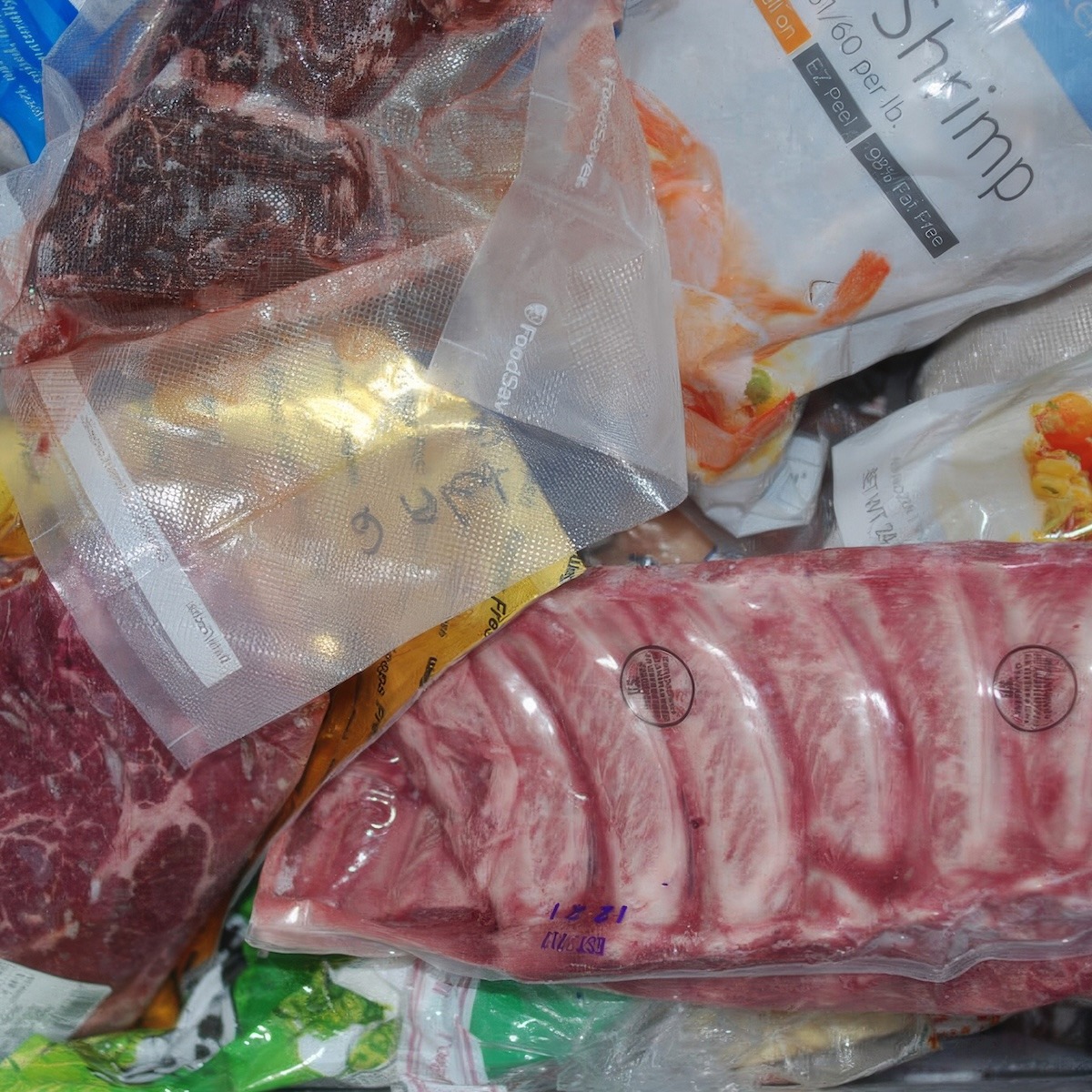
What About Defrosting Frozen Foods?
Thawing is crucial when cooking with frozen foods, as it allows the food to defrost and reach a safe temperature before cooking. Here are some tips for safely and effectively thawing different types of foods:
- Thaw in the refrigerator: The safest and most effective way to thaw food is in the refrigerator. Transfer the frozen food from the freezer to the refrigerator and allow it to thaw for several hours or overnight. This method works well for larger items such as roasts or whole chickens.
- Thaw in cold water: For smaller items such as meat cuts, seafood, or vegetables, you can thaw them in cold water. Place the frozen food in a leak-proof bag and submerge it in cold water. Change the water every 30 minutes until the food is thawed. This method is faster than thawing in the refrigerator but requires more attention.
- Thaw in the microwave: The microwave can be used to thaw foods such as bread, sliced meat, or vegetables. Follow the manufacturer’s instructions for defrosting and use the microwave’s defrost setting.
- Use immediately after thawing: Once the food is thawed, use it immediately or store it in the refrigerator. Do not refreeze food that has been thawed, as this can cause the quality to deteriorate.
Here are some additional tips for safely thawing specific types of foods:
- Meat and poultry: Meat and poultry should be thawed in the refrigerator or using the cold water method. Do not leave meat or poultry at room temperature to thaw, as this can promote the growth of harmful bacteria. Always use a meat thermometer to ensure that meat and poultry reach a safe internal temperature before cooking.
- Seafood: Seafood can be thawed in the refrigerator or using the cold water method. Be sure to remove any ice crystals or excess water before cooking. Do not refreeze seafood that has been thawed.
- Vegetables: Vegetables can be thawed in the refrigerator or using the microwave. Once thawed, use them immediately or store them in the refrigerator.
- Bread and baked goods: Bread and baked goods can be thawed in the refrigerator or using the microwave. To prevent the bread from becoming soggy, remove it from its packaging before thawing.
- Fruits: Fruits can be thawed in the refrigerator or at room temperature. Once thawed, use them immediately or store them in the fridge.
Thawing food safely is an essential step in cooking frozen foods. Always thaw food in the refrigerator, cold water, or microwave. Use a meat thermometer to ensure that meat and poultry reach a safe internal temperature before cooking.
Once thawed, use the food immediately or store it in the refrigerator. By following these guidelines, you can ensure that your thawed food is safe and high-quality.

